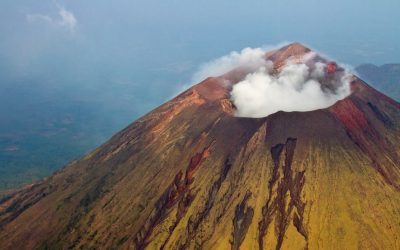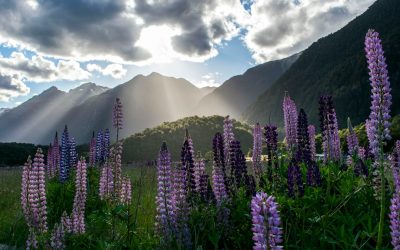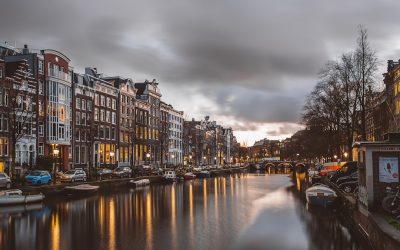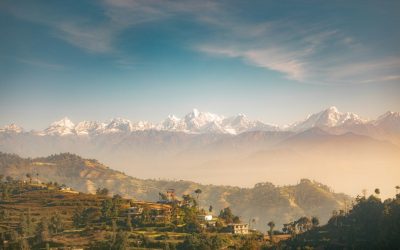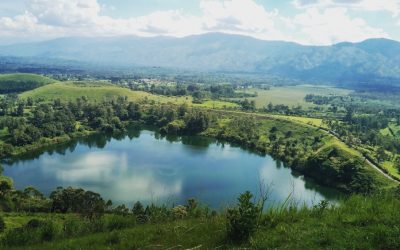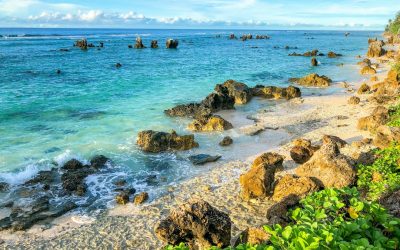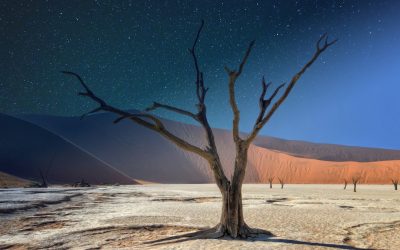World Geography
Geography is the study of the Earth’s landscapes, environments, and the relationships between people and their surroundings. It encompasses both the physical aspects of the Earth, such as its landforms, bodies of water, and climate, as well as the human aspects, including population distribution, cultures, and economies. World geography is a broad field that seeks to understand the complexities of our planet and how humans interact with it. By studying world geography, we can gain a deeper appreciation for the diversity of our planet and the interconnectedness of its various regions.
Geography is a multidisciplinary field that draws on elements of physical science, social science, and humanities. It involves the use of maps, spatial analysis, and geographic information systems (GIS) to understand the Earth’s surface and the processes that shape it. World geography also encompasses the study of human geography, which examines the ways in which people and their activities are distributed across the Earth. By understanding world geography, we can better appreciate the environmental, cultural, and economic challenges facing different regions of the world. This knowledge is crucial for addressing global issues such as climate change, resource management, and international development.
The Five Oceans and Seven Continents
The Earth’s surface is divided into five major oceans: the Pacific, Atlantic, Indian, Southern (or Antarctic), and Arctic Oceans. These vast bodies of water play a crucial role in regulating the Earth’s climate and supporting diverse marine ecosystems. The oceans also serve as important transportation routes and a source of food and other natural resources for human societies around the world.
In addition to the oceans, the Earth’s landmasses are divided into seven continents: Africa, Antarctica, Asia, Europe, North America, Australia (or Oceania), and South America. Each continent has its own unique physical and cultural characteristics, shaped by millions of years of geological processes and human history. From the deserts of Africa to the rainforests of South America, the continents offer a rich tapestry of landscapes and environments for exploration and study.
Major Mountain Ranges and Deserts
The Earth’s surface is also marked by major mountain ranges and deserts that have shaped the planet’s physical and cultural landscapes. The Himalayas, for example, are the highest mountain range in the world and are home to diverse ecosystems and cultures in countries such as India, Nepal, and Bhutan. The Andes in South America, the Rockies in North America, and the Alps in Europe are other prominent mountain ranges that have influenced human settlement patterns and economic activities.
Deserts cover about one-third of the Earth’s land surface and are characterized by low precipitation and extreme temperatures. The Sahara Desert in Africa is the largest hot desert in the world, while the Gobi Desert in Asia is one of the largest cold deserts. Deserts are not only home to unique flora and fauna but have also been important trade routes and cultural crossroads throughout history.
Climate Zones and Biomes
The Earth’s climate is influenced by a variety of factors, including latitude, altitude, ocean currents, and prevailing winds. As a result, the planet is divided into different climate zones, each with its own characteristic weather patterns and ecosystems. The equator, for example, experiences a tropical climate with high temperatures and heavy rainfall, while the polar regions have a cold and dry climate.
These climate zones give rise to different biomes, or large ecological areas characterized by distinct plant and animal communities. The tropical rainforest biome, found near the equator, is home to a diverse array of species and is vital for regulating the Earth’s climate. The grasslands biome, found in regions such as the African savannah and North American prairies, supports grazing animals and has been important for human agriculture throughout history.
Human Geography and Population Distribution
Human geography examines the ways in which people and their activities are distributed across the Earth’s surface. It encompasses topics such as population growth, migration patterns, urbanization, and cultural diversity. Understanding human geography is crucial for addressing global challenges such as poverty, inequality, and environmental degradation.
Population distribution is uneven across the world, with some regions experiencing rapid population growth while others are declining. The majority of the world’s population lives in Asia, particularly in countries such as China and India. Urban areas are also growing rapidly, with more than half of the world’s population now living in cities. This trend has significant implications for infrastructure development, resource management, and social inequality.
Historical and Cultural Geography
Historical geography examines how human activities have shaped the Earth’s landscapes over time. It explores topics such as colonialism, trade routes, and the rise and fall of empires. Cultural geography focuses on how human cultures have developed in different regions of the world and how they interact with their environments.
The Silk Road, for example, was an ancient trade route that connected China with Europe and facilitated the exchange of goods, ideas, and technologies across Eurasia. This historical trade route had a profound impact on the development of cultures and economies along its path. Similarly, cultural geographers study how different societies have adapted to their environments through practices such as agriculture, architecture, and religious beliefs.
The Importance of Geographic Knowledge
Geographic knowledge is crucial for addressing global challenges such as climate change, resource management, and international development. By understanding world geography, we can better appreciate the environmental, cultural, and economic challenges facing different regions of the world. This knowledge is crucial for addressing global issues such as climate change, resource management, and international development.
Geographic knowledge also helps us to understand our interconnectedness with other regions of the world. By studying world geography, we can gain a deeper appreciation for the diversity of our planet and the interconnectedness of its various regions. This understanding can foster a sense of global citizenship and empathy for people from different cultures and backgrounds.
In conclusion, world geography is a complex and multifaceted field that encompasses both physical and human aspects of the Earth’s landscapes. By studying world geography, we can gain a deeper appreciation for the diversity of our planet and the interconnectedness of its various regions. This knowledge is crucial for addressing global challenges such as climate change, resource management, and international development. It also helps us to understand our interconnectedness with other regions of the world and fosters a sense of global citizenship.
FAQs
What is world geography?
World geography is the study of the Earth’s landscapes, environments, and the relationships between people and their environments. It encompasses the physical features of the Earth, as well as the human activity that takes place on it.
Why is world geography important?
World geography is important because it helps us understand the world around us. It provides insights into the physical and human processes that shape our planet, and helps us make informed decisions about how to interact with our environment.
What are the main branches of world geography?
The main branches of world geography include physical geography, which focuses on the Earth’s natural features and processes, and human geography, which examines the relationships between people and their environments.
How does world geography impact our daily lives?
World geography impacts our daily lives in numerous ways, from influencing the weather and climate we experience, to shaping the availability of natural resources and influencing the distribution of populations and cultures around the world.
What are some key concepts in world geography?
Key concepts in world geography include location, place, human-environment interaction, movement, and region. These concepts help geographers understand and interpret the world around them.
Discovering the Charm of Nicaragua: A British Perspective
Nicaragua, a hidden gem in Central America, is a country that has been capturing the hearts of travellers with its stunning landscapes, rich history, vibrant culture, and warm hospitality. My personal experience of falling in love with Nicaragua began with its natural beauty and continued to deepen as I explored its fascinating history, indulged in its delicious cuisine, and connected with its friendly people. From the moment I set foot in this enchanting country, I knew that Nicaragua was a place like no other, a destination that would leave a lasting impression on my soul. Summary Nicaragua’s natural beauty is a major draw for tourists. The country’s rich history is fascinating to explore. Nicaraguan cuisine is a culinary delight. The warmth and hospitality of the people make for a welcoming experience. Nicaragua’s vibrant culture and festivals offer a unique experience for visitors. The Allure of Nicaragua’s Natural Beauty Nicaragua’s natural beauty is truly awe-inspiring, with its diverse landscapes offering something for every type of traveller. From the pristine beaches along the Pacific and Caribbean coasts to the majestic volcanoes that dot the countryside, and the lush rainforests teeming with wildlife, Nicaragua is a paradise for nature lovers. One of the most iconic natural attractions in Nicaragua is Ometepe Island, a volcanic island in Lake Nicaragua that is home to two towering volcanoes and a wealth of biodiversity. Another must-visit destination is the Masaya Volcano National Park, where visitors can witness the fiery glow of an active volcano up close. Exploring Nicaragua’s Fascinating History Nicaragua’s history is as rich and complex as its natural beauty, with a legacy that dates...
Discovering the Best Hidden Gems in the UK: A Guide to Off-the-Beaten-Path Destinations
The United Kingdom is renowned for its iconic landmarks and bustling cities, drawing millions of tourists each year to destinations like London, Edinburgh, and Manchester. However, beyond these well-known hotspots lie a plethora of hidden gems and offbeat attractions waiting to be discovered. These lesser-known treasures offer a unique and authentic glimpse into the rich tapestry of British culture, history, and natural beauty. In this article, we will delve into the enchanting world of the UK’s hidden gems, from charming small towns and scenic countryside to quirky museums and secluded beaches. Small towns and villages in the UK exude a quaint charm that is often absent in larger cities. These idyllic locales are steeped in history and offer a glimpse into traditional British life. From the picturesque Cotswold villages with their honey-coloured stone cottages to the coastal town of Whitstable known for its oysters and vibrant arts scene, there is no shortage of charming destinations to explore. Strolling along cobbled streets, browsing independent shops, and sampling local delicacies are just a few of the delights awaiting visitors to these hidden gems. The UK’s countryside is a patchwork of rolling hills, lush valleys, and rugged coastlines that beckon outdoor enthusiasts and nature lovers alike. National parks such as the Lake District, Snowdonia, and the Peak District offer a playground for hikers, cyclists, and wildlife enthusiasts. Scenic drives through the Scottish Highlands or along the Jurassic Coast provide breathtaking views at every turn. For those seeking a more leisurely pace, tranquil walks through ancient woodlands or along meandering rivers offer a peaceful retreat from the hustle and bustle of city life....
Discovering the Wonders of New Zealand: A Journey Through the Land of the Long White Cloud
New Zealand, known as the “Land of the Long White Cloud,” is a country located in the southwestern Pacific Ocean. It consists of two main islands, the North Island and the South Island, as well as numerous smaller islands. The country has a rich history, with the indigenous Maori people settling in New Zealand over a thousand years ago. European explorers arrived in the 17th century, leading to the colonization of the islands by the British. Today, New Zealand is a diverse and multicultural nation, known for its stunning landscapes, unique wildlife, and vibrant Maori culture. The nickname “Land of the Long White Cloud” comes from the Maori name for New Zealand, “Aotearoa.” In Maori mythology, Aotearoa refers to the North Island of New Zealand and translates to “land of the long white cloud.” This name is said to have been given by Polynesian explorer Kupe when he first sighted the country. The long white cloud is believed to represent the mist that hangs over the mountains and forests of New Zealand, creating a mystical and ethereal atmosphere. This nickname has become synonymous with the natural beauty and unique character of the country. New Zealand is renowned for its geographical diversity, offering a wide range of landscapes from mountains to beaches. The South Island is home to the Southern Alps, a mountain range that runs the length of the island and includes Aoraki/Mount Cook, New Zealand’s highest peak. The North Island features volcanic plateaus and geothermal areas such as Rotorua and Taupo. The country also boasts beautiful beaches along its coastline, with popular spots like Piha and Cathedral Cove...
Discovering the Wonders of UAE: A British Perspective
The United Arab Emirates (UAE) is a country located in the Arabian Peninsula, bordered by Saudi Arabia to the west and Oman to the east. It is known for its stunning landscapes, rich cultural heritage, and rapid development. The UAE is made up of seven emirates, with Abu Dhabi serving as the capital and Dubai as the most populous city. The history of the UAE dates back thousands of years, with evidence of human settlement in the region as early as the Neolithic period. Over the centuries, the area has been influenced by various civilizations, including the Sumerians, Persians, and Ottomans. In 1971, the UAE was formed as a federation of seven emirates, each with its own ruler. Since its formation, the UAE has experienced rapid development and modernization. The discovery of oil in the 1950s transformed the country’s economy and led to significant infrastructure projects and urbanization. Today, the UAE is known for its impressive skyscrapers, luxurious hotels, and world-class shopping malls. Summary UAE is a land of wonders with rich culture, modern marvels, natural beauty, luxurious lifestyle, adventure sports, delicious cuisine, history, heritage, and warm people. Embrace the UAE’s culture and traditions to truly experience the country’s unique identity and values. Dubai and Abu Dhabi offer modern marvels like the Burj Khalifa and Sheikh Zayed Grand Mosque, respectively. The UAE’s desert landscapes are a natural wonder with sand dunes, oases, and wildlife. Indulge in the luxurious lifestyle of the UAE with high-end shopping, dining, and entertainment options. Embracing the Rich Culture and Traditions of the UAE Despite its modernization, the UAE has managed to preserve its rich...
Exploring the charming canals and hidden gems of the Netherlands
The Dutch canals are a defining feature of the Netherlands, and they hold great historical and cultural significance. These waterways have played a crucial role in the country’s development and continue to be an integral part of Dutch life. In this blog post, we will explore the best kept secrets of the Dutch canals, uncovering hidden gems and lesser-known spots to explore. Whether you’re planning a trip to the Netherlands or simply want to learn more about this unique aspect of Dutch culture, this blog post will provide you with all the information you need. Summary The Dutch canals hold many hidden gems waiting to be discovered. Navigating the picturesque waterways of the Netherlands is a must-do experience. Amsterdam’s canal district is full of surprises and hidden gems. The quaint canal towns of the Netherlands are worth exploring for their charm and beauty. Taking a canal tour is the best way to experience the beauty of the Netherlands. Discovering the Best Kept Secrets of the Dutch Canals While the canals in Amsterdam are undoubtedly popular tourist destinations, there are many hidden gems and lesser-known spots to explore throughout the Netherlands. One such gem is the city of Utrecht, which boasts a beautiful canal system that rivals that of Amsterdam. Utrecht’s canals are lined with charming cafes, boutiques, and historic buildings, making it a perfect place to wander and soak in the atmosphere. Another hidden gem is the town of Leiden, located just a short train ride from Amsterdam. Leiden’s canals are known for their picturesque beauty and tranquility. Take a leisurely stroll along the canals and discover hidden courtyards,...
Exploring the Rich Culture and History of Ukraine: A Journey Through the Heart of Eastern Europe.
Ukraine, located in Eastern Europe, is a country with a rich and diverse culture and history. With a population of over 44 million people, Ukraine is the second-largest country in Europe. Throughout its history, Ukraine has been influenced by various cultures and empires, including the Byzantine Empire, Mongols, Polish-Lithuanian Commonwealth, and the Soviet Union. These influences have shaped Ukraine’s identity and contributed to its unique cultural heritage. The culture and history of Ukraine are of great importance to its people. They serve as a source of pride and identity, connecting Ukrainians to their roots and traditions. Ukraine’s cultural heritage is a testament to the resilience and strength of its people, who have endured numerous challenges throughout history. By understanding and appreciating Ukraine’s culture and history, we can gain a deeper understanding of the country and its people. Summary Ukraine is a land of rich culture and history, with a vibrant culture and fascinating history to discover. Exploring Ukraine’s natural beauty is a must, with stunning landscapes and unique flora and fauna. Ukrainian cuisine is a delicious journey, with a mix of traditional and modern dishes to try. Ukrainian art and architecture are a visual delight, with unique styles and influences from different eras. Ukraine’s festivals and celebrations are a colourful experience, with a mix of religious and cultural events throughout the year. Discovering the Vibrant Culture of Ukraine Ukraine is known for its vibrant and diverse cultural traditions. From folk music and dance to traditional dress, Ukrainian culture is rich with unique customs and practices. Folk music plays a significant role in Ukrainian culture, with traditional instruments such as...
Exploring the Enchanting Landscapes of Nepal: A Journey Through the Himalayan Kingdom
Nepal, a landlocked country nestled in the heart of the Himalayas, is a treasure trove of natural beauty. From its majestic mountains to its lush green valleys, from its mighty rivers to its enchanting lakes, Nepal offers a diverse range of landscapes that are sure to leave visitors in awe. Exploring Nepal’s natural wonders is not only a feast for the eyes but also an opportunity to connect with nature and experience the tranquility and serenity that this country has to offer. The geography of Nepal is truly remarkable. It is home to eight of the world’s ten highest peaks, including Mount Everest, the highest mountain on Earth. The Himalayan mountain range stretches across the northern part of the country, creating awe-inspiring landscapes that are a sight to behold. The valleys of Nepal are equally stunning, with their lush greenery and picturesque landscapes. The rivers that flow through the country add an element of thrill and adventure, while the lakes provide a tranquil retreat for those seeking peace and serenity. Exploring Nepal’s natural beauty is not only a visual delight but also an opportunity to engage in various outdoor activities. Trekking is one of the most popular activities in Nepal, with numerous trekking routes and peaks to explore. From the famous Annapurna Circuit to the challenging Everest Base Camp trek, there is something for everyone. Responsible tourism is crucial in the Himalayas to ensure that these pristine landscapes are preserved for future generations. Summary Nepal’s natural beauty is a must-see for any nature lover. The Himalayan Mountains offer breathtaking landscapes that will leave you in awe. The lush green...
Discovering the Hidden Gems of Uganda: A Journey Through the Heart of East Africa
Uganda, often referred to as the “Pearl of Africa,” is a hidden gem in East Africa that offers a wealth of unique experiences and attractions for travelers. While it may not be as well-known as its neighboring countries, Uganda has so much to offer in terms of natural beauty, cultural heritage, and adventure tourism. From its stunning national parks and wildlife reserves to its vibrant cities and towns, Uganda is a destination that should not be overlooked. One of the main reasons why Uganda is such a special travel destination is its rich cultural heritage and traditions. The country is home to over 50 different ethnic groups, each with their own customs and traditions. From the Baganda in the central region to the Karamojong in the northeast, visitors have the opportunity to immerse themselves in the diverse cultures of Uganda. Traditional dances, music, and festivals are an integral part of Ugandan culture, and attending a performance or participating in a celebration is a must-do experience. Additionally, there are numerous cultural sites and museums throughout the country that provide insight into Uganda’s history and traditions. Summary Uganda is a hidden gem with a rich cultural heritage and stunning natural beauty. The country’s national parks and wildlife reserves offer incredible opportunities for exploration and adventure. Uganda’s cities and towns are vibrant and full of life, with unique cuisine and a thriving arts and crafts scene. The country’s history is fascinating, from colonialism to independence, and its lakes, rivers, and waterfalls are breathtaking. Uganda’s warm and welcoming people make it a must-visit destination in East Africa. Uganda’s Rich Cultural Heritage and Traditions...
Discovering the Hidden Gems of Nauru: A Journey to the Smallest Island Nation in the South Pacific
Nauru, the smallest island nation in the South Pacific, is a hidden gem waiting to be discovered. With its stunning beaches, crystal-clear lagoons, and unique geological features, Nauru offers a paradise-like experience for visitors. Despite its small size, the island is rich in history and culture, with a vibrant art scene and colorful festivals. In this article, we will explore the wonders and beauty of Nauru, from its natural landscapes to its delicious cuisine and exciting adventure activities. Summary Nauru is the smallest island nation in the South Pacific, with stunning natural wonders and a rich cultural heritage. The indigenous people of Nauru have a unique history and culture, with traditional practices still celebrated today. Nauru’s beaches, caves, and lagoons offer breathtaking scenery and opportunities for exploration. The island’s flora and fauna are diverse and unique, with many species found nowhere else in the world. Nauru’s traditional cuisine is a must-try, and the island offers exciting adventure activities for the more adventurous traveller. History and Culture The indigenous people of Nauru, known as the Nauruans, have a rich heritage that dates back thousands of years. They have a strong connection to their land and sea, which is reflected in their traditional practices and beliefs. The arrival of European colonizers in the late 19th century had a significant impact on Nauruan culture. The island became a German colony before being occupied by the Japanese during World War After the war, Nauru was placed under Australian administration until it gained independence in 1968. Despite the influence of colonization and modernization, Nauruan culture has managed to survive and thrive. Traditional practices such...
Discovering the Hidden Gems of Tuvalu: A Journey Through the Pacific’s Smallest Nation
Tuvalu, a small island nation located in the Pacific Ocean, is often referred to as the Pacific’s best-kept secret. With its pristine beaches, vibrant culture, and warm hospitality, Tuvalu offers a unique and unforgettable travel experience. Despite its small size and remote location, Tuvalu has a lot to offer to adventurous travelers seeking an off-the-beaten-path destination. Tuvalu is made up of nine coral atolls and islands, with a total land area of just 26 square kilometers. It is one of the smallest countries in the world, both in terms of land area and population. However, what it lacks in size, it more than makes up for in natural beauty and cultural richness. Summary Tuvalu is a hidden gem in the Pacific, with pristine beaches and coral reefs. The island nation has a unique culture and traditions, including traditional arts and crafts. Funafuti, Tuvalu’s capital, has a rich history waiting to be uncovered. Sampling the local cuisine is a must-do for any culinary adventurer visiting Tuvalu. The friendly locals and warm hospitality make Tuvalu a welcoming destination for eco-tourism and off-the-beaten-path journeys. The Island Nation’s Unique Culture and Traditions Tuvalu is known for its distinct culture and traditions that have been passed down through generations. The people of Tuvalu take great pride in their cultural heritage and are dedicated to preserving their traditions. One of the most prominent aspects of Tuvaluan culture is music and dance. Traditional songs and dances are an integral part of everyday life in Tuvalu, with performances often taking place during special occasions and celebrations. The music is characterized by rhythmic drumming and melodic singing,...
Discovering the Natural Wonders of Namibia: A Journey Through the Land of Endless Horizons
Namibia, located in southwestern Africa, is a country known for its unique geography and diverse wildlife. With its vast deserts, stunning landscapes, and rich cultural heritage, Namibia has become an increasingly popular travel destination for adventurers and nature enthusiasts alike. From the world’s oldest desert to the hauntingly beautiful Skeleton Coast, Namibia offers a truly unforgettable experience. Summary Namibia’s geology is unique and offers a journey through time. The diverse wildlife of Namibia includes desert-adapted lions and elephants. The Namib Desert is the world’s oldest desert and worth exploring. The Skeleton Coast is hauntingly beautiful and a must-see landscape. Etosha National Park offers a safari adventure like no other. Namibia’s Unique Geology: A Journey Through Time Namibia’s geological history is a fascinating journey through time. The country is home to some of the oldest rocks on Earth, dating back billions of years. The most iconic geological formation in Namibia is the Fish River Canyon, the second largest canyon in the world. This natural wonder was formed over millions of years by the erosive power of the Fish River. Another highlight of Namibia’s unique geology is the Etosha Pan, a vast salt pan that covers approximately 25% of Etosha National Park. This ancient lake bed is now a dry, white expanse that shimmers in the sunlight. The pan attracts a wide variety of wildlife, making it one of the best places in Africa for game viewing. The Diverse Wildlife of Namibia: From Elephants to Desert-Adapted Lions Namibia is home to a diverse range of wildlife, adapted to survive in its harsh desert environment. One of the most iconic animals in...
Discovering the Hidden Gems of Turkmenistan: A Journey Through Central Asia’s Best-Kept Secret
Nestled in the heart of Central Asia, Turkmenistan is a hidden gem waiting to be discovered. With its rich cultural heritage, breathtaking natural wonders, and warm hospitality, this country offers a unique and unforgettable travel experience. Despite being relatively unknown to many travellers, Turkmenistan has a lot to offer, from ancient cities and architectural marvels to stunning landscapes and vibrant bazaars. In this article, we will delve into the mysteries of Turkmenistan and explore its hidden treasures. Summary Turkmenistan is a country with a rich cultural heritage and natural wonders to explore. Ashgabat, the capital city, is known for its white marble buildings and golden domes. Ancient cities like Merv, Nisa, and Kunya-Urgench offer a glimpse into Turkmenistan’s past. Turkmen carpets are a fascinating part of the country’s textile traditions. The warm hospitality of the Turkmen people makes for a unique cultural experience. The Rich Cultural Heritage of Turkmenistan: A Glimpse into Central Asia’s Past Turkmenistan’s culture is deeply rooted in its historical connection to the Silk Road. As a major trading route between East and West, the Silk Road brought various influences to the region, shaping Turkmenistan’s unique cultural identity. Traditional music and dance play a significant role in Turkmen culture, with performances often showcasing the country’s rich history and folklore. The traditional clothing of Turkmenistan is also an important aspect of its cultural heritage, with vibrant colours and intricate designs reflecting the country’s nomadic past. Exploring the Natural Wonders of Turkmenistan: From the Karakum Desert to the Caspian Sea Turkmenistan is home to some of the most stunning natural landscapes in Central Asia. The Karakum Desert, one...
